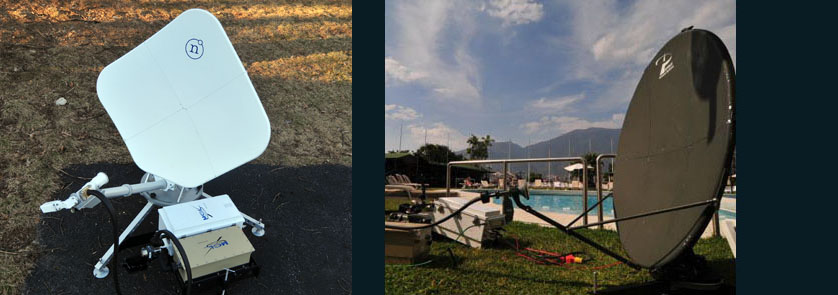
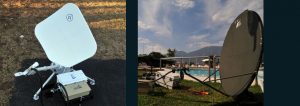
Second generation (left) and first generation (right) airline-checkable flyaways.
DCI’s first-generation airline-checkable flyaway is a Patriot 1.1m aluminum 6-segment military “manpack” antenna. This flyaway has worked well, however we wanted to build something more rugged and self-contained. The result is our second-generationairline flyaway, a modified Norsat SecureLink. We stripped this system down to just the reflector and base, removing the small 20w BUC, LNA, and other electronics used for Norsat’s IP link. With a carbon fiber reflector rated at 600 watts by manufacture Cobham Defense in the UK, this little flyaway is capable of so much more than the original 10mbps it was first used for. Our modification includes installing TWO high power amplifiers- a a MCL MT3400, and the latest in TWT technology, a 32lb linearized 400w MT2400.– in a custom-made collapsible bracket that both acts as a ballast for the antenna and raises the amplifiers off the ground. Both of these outdoor amplifiers have internal block upconverters (BUCs).

Custom bracket holding two HPA’s and a 1:1 redundancy switch (left), a 3 path HD mux in a single rack in a SUV
Where has the first-generation flyaway traveled?
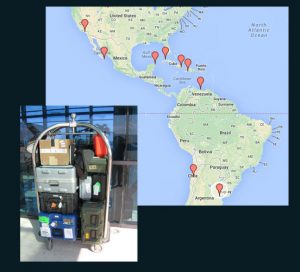
A redundant 4-path H.264 HD flyaway that fits on a baggage cart? Yes, DCI can do that!
As the oldest flyaway operator in continuous operation in the US, DCI has a long history of innovation in the field. Our first flyaway, a 1.8m Advent Mantis, provided the Department of Defense pool during Desert Storm from Kuwait City, a flyaway voice comms system decades before commercial equipment was available, covering the Japanese embassy hostage crisis in Peru, and the list goes on.
DCI’s first flyaway setup on the roof of the now-destroyed Hotel Montana in Haiti, covering the 1991 coup:
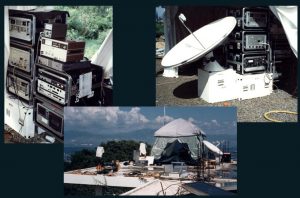
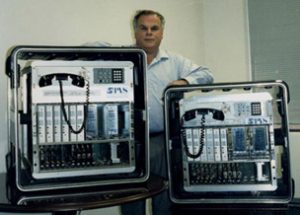
DCI designed and built this comms system totally in house, allowing our first flyaway to carry phone calls along with the video uplink. This was decades before comms systems became commercially available.
DCI’s current flyaway systems continue the tradition providing innovative solutions in difficult locations such as the Haiti earthquake, Chile mine rescue, and Papal visit to Cuba. Our flyaway recently downlinked the first ever live surgery 3D broadcast! The small airline checkable footprint makes covering breaking news events like the Chavez funeral in Caracas, or the new pope from Buenos Aires in a way never before possible, yet still maintaining the full redundancy and capability of a cargo-only flyaway.
In 1988 CBS engineering had a 4 line phone system on a subcarrier of an analog FM fly-away. The fly-away was a 1.8M system CBS called RADET. IT had 2 250W TWTA's phase combined. The phone system used an pper Sideband audio MUX where 3 channels had 3 kHz wide audio for connection to extensions in NYC. The 4th channel carried the E&M signalling. I know it was used at least once for the Papal visit to Miami